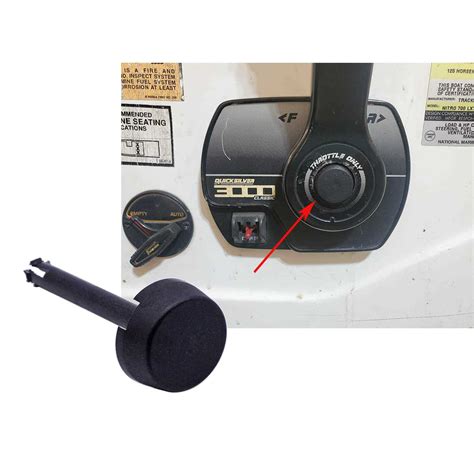Quick & Easy Quicksilver Throttle Control Wiring Removal Guide
Removing the wiring from your Quicksilver throttle control might seem daunting, but with the right guide, it's a straightforward process. This step-by-step guide will walk you through the removal, ensuring a smooth and efficient experience. Whether you're troubleshooting a problem, installing a new system, or simply performing maintenance, understanding this process is crucial. This guide focuses on providing clear instructions and addressing common questions encountered during the process.
Understanding Your Quicksilver Throttle Control System
Before starting, it's essential to identify your specific Quicksilver throttle control model. While the general principles remain similar across models, slight variations may exist. Consult your owner's manual for model-specific details and diagrams. This will help prevent any potential complications during the removal process. Pay close attention to the location and type of connectors used. Taking photos before disconnecting anything is highly recommended for reassembly.
Tools You'll Need
Gather these tools beforehand to streamline the process:
- Screwdrivers: A Phillips head screwdriver is usually needed, but check your specific model.
- Wire strippers/cutters: For any potential wire modifications (only if absolutely necessary and you understand the implications).
- Electrical tape: To secure any wires if necessary after disconnection.
- Small flashlight: To illuminate hard-to-reach areas.
- Owner's manual: For model-specific instructions and diagrams.
- Gloves (optional): To protect your hands.
Step-by-Step Wiring Removal Guide
1. Disconnect the Battery: This is the most crucial safety step. Disconnect the negative (-) battery terminal to prevent accidental short circuits and electrical shocks.
2. Access the Wiring Harness: Locate the wiring harness connected to your Quicksilver throttle control. This often involves removing panels or covers. Refer to your owner's manual for precise location and access procedures.
3. Identify the Connectors: Carefully examine the connectors on the wiring harness. You'll likely find several connectors, each serving a specific function (e.g., power, signal, etc.).
4. Disconnect the Connectors: Gently disconnect each connector one by one. Most connectors have a locking mechanism; look for a release tab or lever. Gently press or pull on the release mechanism while pulling the connector apart. Avoid pulling on the wires themselves.
5. Label and Organize: Once disconnected, label each wire or connector to prevent confusion during reassembly. Use masking tape and a pen to write down a brief description (e.g., "power," "signal," etc.).
6. Secure Loose Wires: Once all connectors are disconnected, carefully secure any loose wires to prevent them from obstructing other components or causing accidental damage.
7. Inspect the Wiring: Visually inspect the wiring for any damage, fraying, or corrosion. Address any issues you find before reassembling.
Frequently Asked Questions (FAQs)
What if I accidentally damage a wire during removal?
If you accidentally damage a wire, you'll need to repair it. This might involve splicing the wire, using electrical connectors, and properly insulating the repair using electrical tape. Consult your owner's manual, a qualified marine mechanic, or an electrician. Attempting a repair without sufficient electrical knowledge can be hazardous.
Can I re-use the old wiring after removal?
Generally, yes, you can re-use the wiring provided it's undamaged. However, if the wiring shows signs of damage, such as fraying, corrosion, or cracks in the insulation, it's best to replace it. Compromised wiring can lead to electrical issues and even safety hazards.
My Quicksilver throttle control isn't working; is wiring removal the first step in troubleshooting?
Wiring removal should only be considered after performing basic troubleshooting checks. Ensure the battery is charged, fuses are intact, and other potential issues are addressed before investigating wiring.
Where can I find a wiring diagram for my specific Quicksilver throttle control model?
Your owner's manual should contain a wiring diagram. If not, contact Quicksilver customer support or a certified service center.
Conclusion
Removing the wiring from your Quicksilver throttle control is achievable with careful planning and execution. By following the steps outlined in this guide and consulting your owner's manual, you can complete the process safely and efficiently. Remember to prioritize safety by disconnecting the battery before starting and taking precautions to prevent damage to the wiring harness. If you are unsure about any part of this process, consult a qualified marine mechanic.

